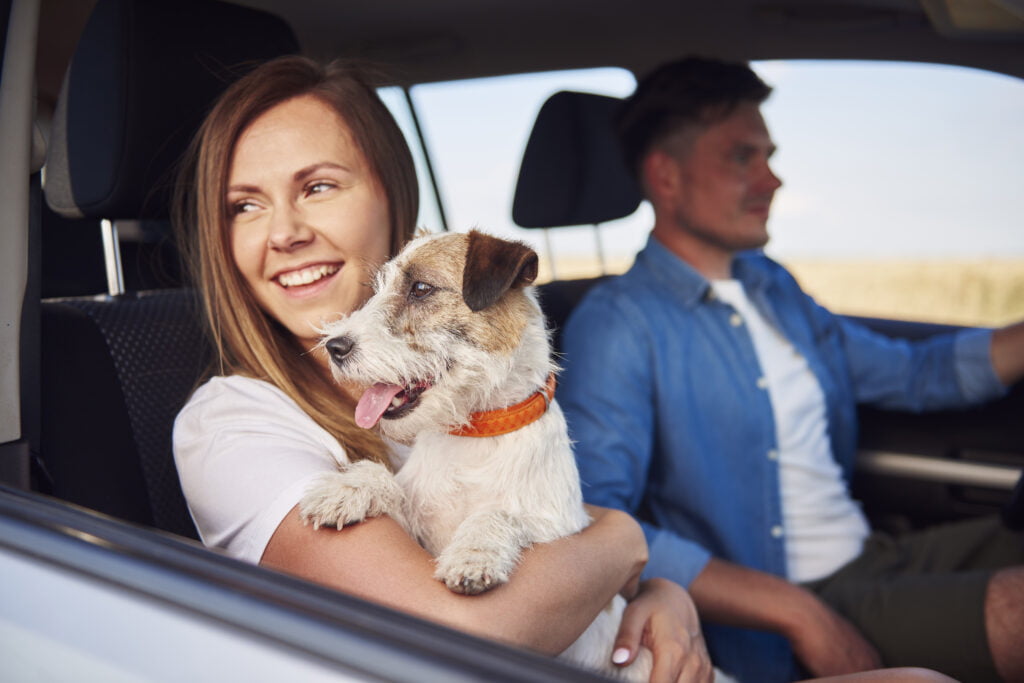Comprehensive Pet Travel Guide for Dogs Cats Rabbits and Small Pets
Preparing for a journey with your pets can often seem daunting, but with the right guidelines, it can turn into a smooth and enjoyable experience for both you and your animal companions. As more people opt to include their pets in their travel plans, understanding the unique needs of different animals becomes crucial.
This guide offers tailored advice for a variety of pets, including cats, dogs, rabbits, and other small pets. By reading this, you will gain insights into the essentials of pet travel, from health and safety to comfort, ensuring that your next trip is as stress-free as possible.
So, whether you’re planning a quick getaway or a long vacation, let this guide help you prepare adequately for a pleasant journey with your furry, feathered, or furred friends.
Essential Pre-Travel Preparation for Pets

When planning to travel with your pets, ensuring they are ready for the journey is crucial. Start by scheduling a visit to the vet for a general health check to confirm that your pet is fit for travel. Vaccinations should be up-to-date, and depending on your destination, additional treatments, like anti-parasite medications, may be required. Don’t forget to gather all necessary travel documents, such as proof of vaccinations and any required travel permits. Remember to also consider the specific requirements for Moving Your Pet to your intended destination.
Specific Requirements by Pet Type
Cats: Cats often find travel stressful, so consider a comfortable travel carrier and familiarise them with it well before your trip. Check if sedation is appropriate for your cat based on its health and the travel length.
Dogs: For dogs, look into specific leash and muzzle requirements that might apply on public transport or at your destination. Ensure your dog has a secure harness or a travel crate for car journeys.
Rabbits and Small Pets: Small animals like rabbits can be particularly sensitive to changes in their environment. Use a well-ventilated carrier and keep a close eye on the temperature and noise levels to avoid stress.
Choosing the Right Transport Method

Selecting the most suitable mode of transport for your pets is key to ensuring their safety and comfort during travel. Consider the options available based on your destination and the type of pet you have.
Air Travel
Flying can be quick but might require special considerations, especially for pets. Check with the airline about their pet policies and whether pets can travel in the cabin or must be placed in the hold. It’s crucial to use an airline-approved carrier that allows your pet to stand, turn, and lie down comfortably. For more detailed information, refer to the Pet Travel Insurance Guide.
Road Trips
Travelling by car allows for more control over your pet’s environment. Ensure your pet is secured, either in a carrier or with a seatbelt harness designed for pets. Plan for regular stops to allow your pet to stretch, use the toilet, and drink water.
Public Transportation
If using public transport, understand the rules that different operators have regarding pet travel. Smaller pets can often travel in carriers on buses and trains, while larger pets might have more restrictions.
Packing for Your Pet: What to Bring Along

When preparing for travel with your pet, packing the right items is essential to ensure their comfort and safety. Here’s a practical checklist to help you organise everything your pet will need on the journey.
Essential Checklist
Food and Water: Pack enough of your pet’s regular food to last the entire trip to avoid any stomach upset from sudden changes. Include a portable water bottle or a collapsible bowl for easy hydration.
Toys and Comfort Items: Bring their favourite toy or a comforting blanket to help soothe them during the journey.
First-Aid Supplies: Prepare a basic pet first-aid kit. Include items like bandages, antiseptic wipes, and any medication they regularly take.
Tailored Suggestions
For shorter trips, the essentials might suffice, but for longer journeys, consider additional items:
Long-lasting chew toys for dogs to keep them occupied.
Calming sprays or treats for cats, which can help reduce their stress.
Extra bedding for small pets like rabbits, to ensure they stay comfortable throughout the journey.
Accommodation Tips: Finding Pet-Friendly Stays
Securing the right accommodation is critical when travelling with pets. Here are some tips to help you find a welcoming place for you and your pet.
Booking Pet-Friendly Hotels or Rentals
Start by researching hotels or rentals that explicitly state they are pet-friendly. Websites dedicated to pet travel can be useful, or you can directly inquire with the accommodation’s customer service. Always check the hotel’s pet policy to understand any fees or restrictions that might apply.
Considerations for Pet-Friendly Accommodation
Space Availability: Ensure the accommodation offers enough space for your pet to move around comfortably.
Nearby Facilities: Look for accommodations with nearby parks or trails, which are convenient for walking your dog. Also, check if there are any pet care facilities like veterinary clinics close by.
This approach ensures your pet has a safe and comfortable environment to stay in while you are away from home, making your travel experience enjoyable for both you and your pet.
Managing Anxiety and Health During Travel
Ensuring your pet remains calm and healthy during travel is essential. Here’s how to manage their anxiety and maintain their well-being throughout the journey.
Reducing Stress for Pets
Introduce your pet to their travel carrier ahead of time to minimise stress on the travel day. For dogs, practice short drives to help them get used to longer trips. Cats often benefit from pheromone sprays in their carriers. Small pets like rabbits can be comforted by keeping a piece of their bedding within their travel home.
Behavioural Training Tips and Calming Products
Behavioural training, such as acclimating your pet to being in a vehicle or handling noise, can greatly reduce travel anxiety. Consider calming treats or toys that can help distract and soothe your pet. Always consult with your vet before using any new product to ensure it’s suitable for your pet’s health and breed.
Veterinary Insights
Consult a veterinarian or an animal behaviourist for personalised advice. They can provide insights tailored to your pet’s specific needs, such as recommending medications for extremely anxious pets or suggesting additional behavioural techniques.
By implementing these strategies, you can help ensure your pet’s travel experience is as stress-free as possible, keeping them calm and healthy from start to finish.
Legal and Regulatory Considerations in the UK When Travelling With Pets

When travelling with pets across international borders or within the UK, it’s crucial to adhere to specific legal and regulatory requirements to ensure a smooth journey for both you and your pet.
Travelling from the UK to the EU or Northern Ireland
Since the end of the transition period post-Brexit, pet owners travelling to the EU or Northern Ireland need to comply with new regulations. Pets must be microchipped and vaccinated against rabies. A waiting period of 21 days after the primary vaccination is required before travel.
Additionally, dogs must be treated against tapeworm 24-120 hours before arrival in tapeworm-free countries. An Animal Health Certificate (AHC) is necessary, replacing the previous pet passport system, and must be obtained no more than 10 days before travel (GOV.UK).
Entering the UK
Pets entering the UK must follow the rules under the Part 2 listed status of the EU Pet Travel Scheme. This includes having a microchip, a valid rabies vaccination, and entering through designated Travellers’ Points of Entry (TPEs). It is also important to use approved transport routes and companies when bringing pets into the UK (GOV.UK).
Approved Routes and Carriers
The UK has specific guidelines regarding the approved air, sea, and rail carriers and routes for pet travel. It is essential to check the latest approved list by the Animal and Plant Health Agency (APHA) to ensure compliance and ease of entry when travelling with pets to the UK (GOV.UK).
General Tips for Pet Travel
- Always verify the specific requirements and documentation needed directly from official sources or consult with a vet.
- Ensure all treatments and vaccinations are up to date and properly documented.
- Check with your travel company about their pet travel policies and any additional requirements they might have.
Key Takeaways for Travelling with Pets
Travelling with pets requires careful planning to ensure their safety and comfort. Whether by air, road, or public transport, understanding and adhering to specific transport methods and regulations is crucial.
Always check for the most up-to-date travel requirements, including microchipping and vaccinations, and choose accommodations that will welcome and cater to your pets. Remember to pack essential items like food, toys, and first-aid supplies to keep your pet comfortable and happy throughout the journey.
For more detailed guidance on pet travel, and to keep your furry friends safe and stress-free, contact Pets Lets Travel for ongoing pet care tips and pet transportation services.




